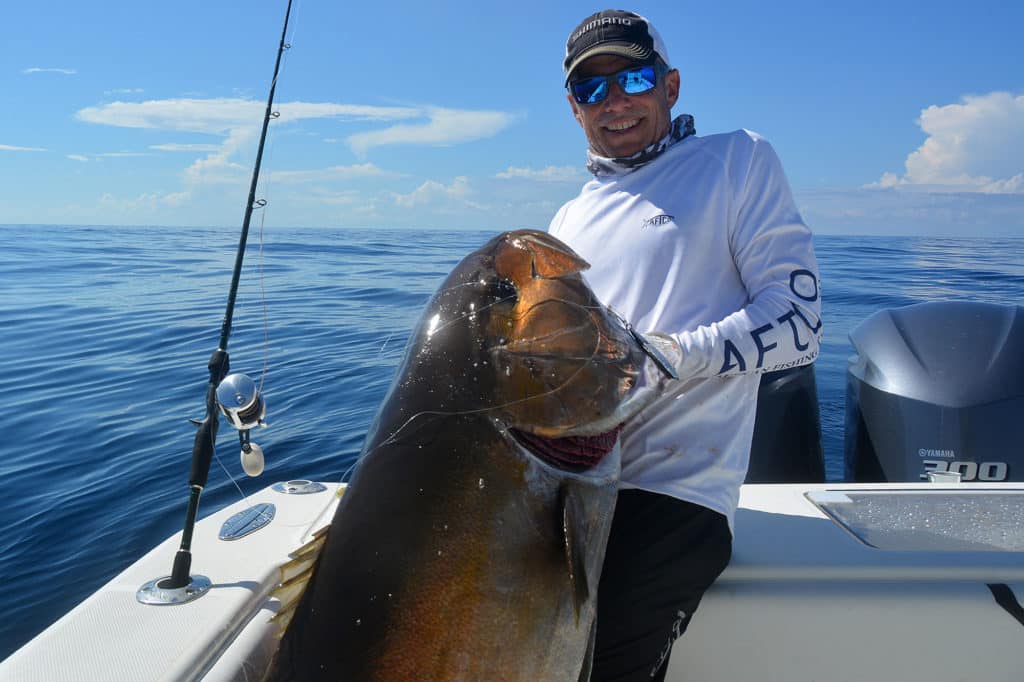
For Dave Pfeiffer, fishing always meant Southern California.
“As someone who loves the history of sport fishing, I became immersed in the culture, stories and fisheries of Southern California,” says Pfeiffer—lifelong California angler and president of Shimano America. He cites the Avalon Tuna Club, birthplace of sport-fishing ethics, and the challenges and rewards of fishing for SoCal’s bluewater pelagics—swordfish, striped marlin, yellowfin and bluefin tuna.
Packing up and leaving all that to live in South Carolina wasn’t on his radar—until Shimano made the decision in 2017 to move its headquarters from Irvine, California, across the continent to Charleston. Pfeiffer, as skilled and hardcore an angler as anyone this author has fished with, admits to mixed feelings about leaving Southern California fishing for a totally different scenario.
He found relatively little information about the fishing off Charleston beforehand. “So,” Pfeiffer says, “it was wide open to learn and begin to conquer.”
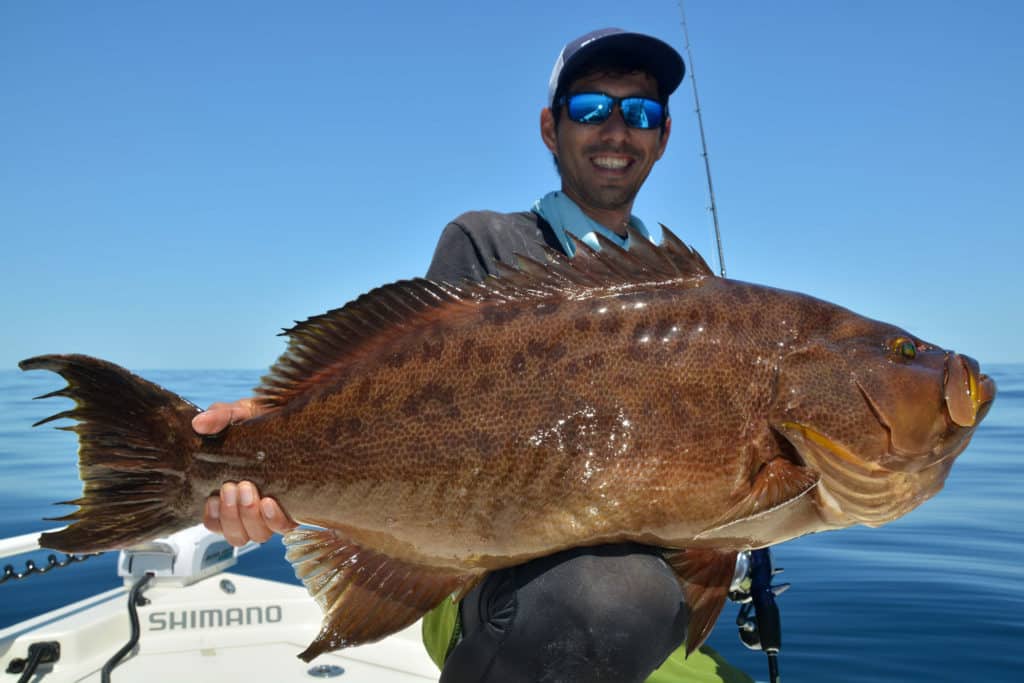
And conquer he and some Shimano colleagues did.
It took only a couple trips offshore in his 32-foot SeaVee with twin Yamaha 300s, which he had trailered from the West Coast, to erase any reluctance about the move. Compared to his old stomping grounds, “The vast amount of structure provided a jigging paradise where we caught groupers, snappers, jacks and other great game fish, and the blue-water grounds were plentiful with wahoo, sailfish, marlin, mahi and broadbill.”
And as some icing on that cake, “There were no crowds of anglers; the fishery just wasn’t pressured as it had been off Southern California.
“The fish are aggressive in the Atlantic,” Pfeiffer adds. “In my first two seasons here, I never put a single live bait on the boat yet caught more fish and more variety than I would have thought possible. All that and I’m still learning.”
Wide-Open Jigging
For some time after Shimano’s relocation to Charleston, I had been seeing photos from Pfeiffer’s SeaVee that supported his enthusiasm for an abundance of action and big fish, so I could hardly turn down his offer to come up and experience the wide-open jigging there for myself.
Unfortunately, during my visit, Pfeiffer had to go out of state, but Shimano’s field marketing manager, Blaine Anderson, proved a capable skipper on the SeaVee—and a consummate jig fisherman. Even with several experienced anglers aboard, if anyone was hooked up, it would be Anderson. I noticed he eschewed the slow-pitch jigging techniques I often used, sticking with the rapid-fire pumps of a speed jigger.
Facing no more than a moderate chop to our first stop, we covered the 30-mile run from Toler’s Cove Marina on Sullivan’s Island in good time. Anderson slowed in about 90 feet of water.
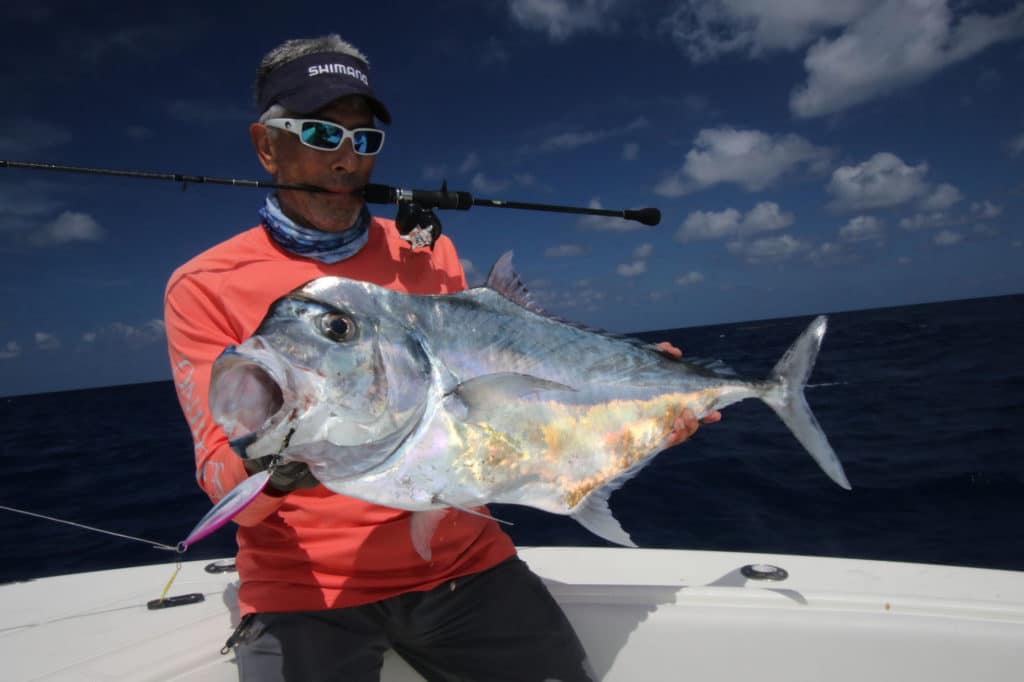
During our first few drifts, Anderson and Glenn Hughes, president of the American Sportfishing Association, quickly tied into amberjack—plenty big enough to make the lads work up a sweat, but far from the 80-plus-pound bad boys that have been released from this boat already. Then, Anderson, still dropping a brown/silver Flatside Butterfly jig, brought up a splash of color, thanks to a bright pink mutton snapper and, next drop, boated the day’s first (of many) grouper, a respectable scamp.
A succession of hookups (a fair number of those in losing battles to the rocks on the bottom) followed, with more scamps (including one monster for Anderson), gag grouper, almaco jacks and amberjacks predominant. The action proved the propensity of these waters for variety that day and the next, as I added a solid African pompano to the fish box, and Anderson hooked a tough and notably unusual (for these waters) black jack. In addition, we brought to the boat cobia, squirrelfish, bigeye, sand tilefish, vermilion snapper, littlehead porgy, Atlantic (true) bonito and rock hind, all on jigs.
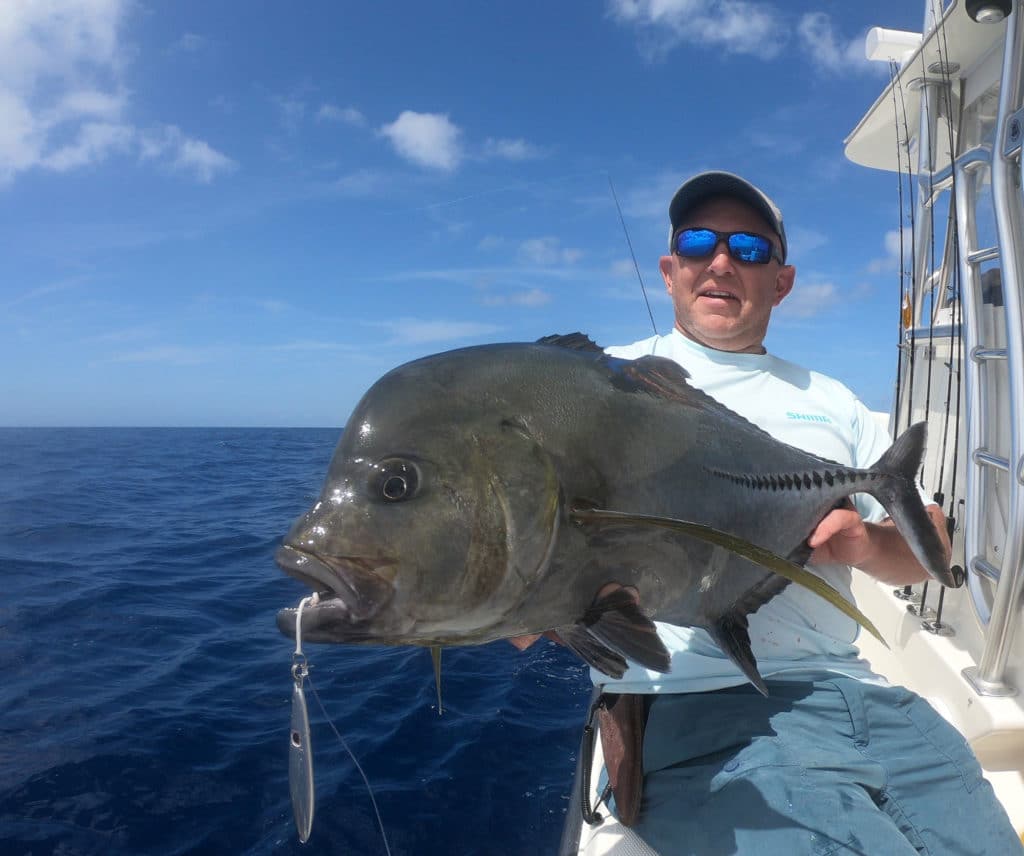
Still more species frequently hooked while jigging off South Carolina include black sea bass, triggerfish, blackfin tuna, kingfish, blue runner, rudderfish and of course sharks. Head out to deeper water for wreckfish, snowy grouper and others.
Read Next: 7 Tips for Jigging and Popping Blackfin Tuna
Hughes managed to land the biggest gag grouper of the trip, a real prize, on a Tranx reel loaded with 65-pound braid, after the fish nailed a chartreuse Butterfly Flat Fall jig.
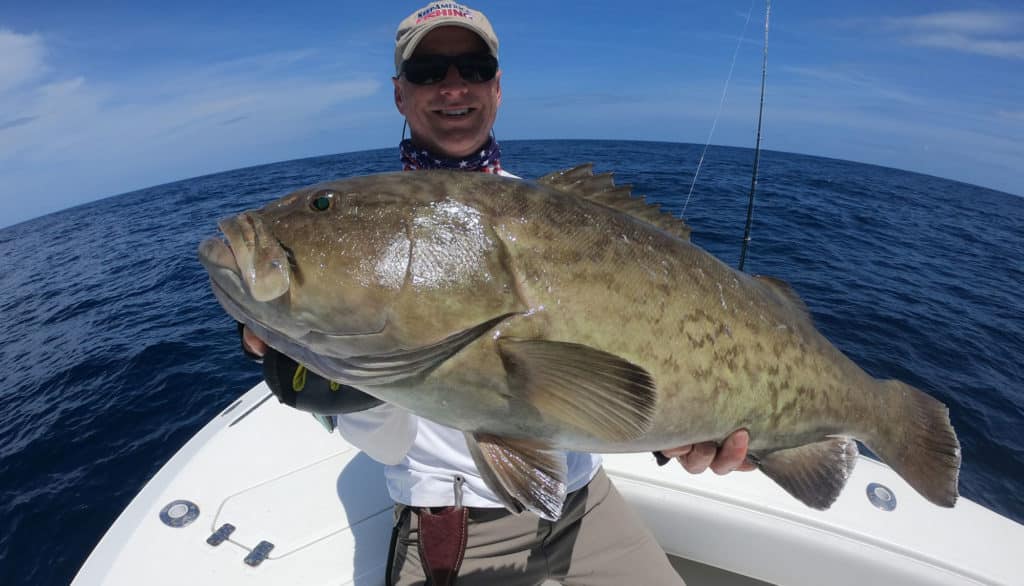
Big gags roam the bottom here in good numbers. “We’ve boated gags in the mid-40s and have hooked and lost larger ones,” Anderson says. Scamps (many of impressive size), outnumber gags three to one, though “In late summer, we get covered up with smaller graysby grouper.”
The Shimano team seldom specifically targets red snapper, with seasons so short, “But they’re not hard to find,” Anderson says. “They’re typically over live bottom in 90 to 120 feet. Flatfall jigs’ rapid flutter on the drop get the best results.”
Prowling Beasts
The Shimano anglers eschew bait; the cynic might point out that, after all, they are in the business of selling jigs. But they also make rods and reels for bait fishing. In fact, “jigging allows us to spend more time in the strike zone rather than having to wind up after every missed hit to rebait,” Anderson says. “And the action of jigs helps target bigger, more aggressive fish, bottom to top.”
On any given trip, they’ll use both conventional and spinning rods, though Anderson prefers spinners as they make it easier to fish speed jigs (but are still capable of slow-pitching) and offer more drag for the same line capacity. He points out that a Twin Power 10000, a spinner of modest size, puts out 55 pounds of max drag—power that “offers an answer to those fish I hook that might otherwise kick my ass.”
Anderson fishes jigs in the 80- to 168-gram size (2.8 to about 6 ounces), noting that “time after time we see groupers throwing up 4- to 6-inch bait.”
Anglers looking to find out how tough they really are can work big speed jigs well above bottom to tangle with some of the beastly amberjack that prowl these waters. Pfeiffer has bested by far the largest the Shimano boat has seen yet. Length/girth calculations put it at 115 pounds. (That was caught using a little Trinidad 14 and a fairly whippy 6-foot, 3-inch Trevala S rod.)
For the main (braided) line, Anderson says, “We finally settled on 80-pound Maxcuatro.” The advantage of that braid is its ultra-thin diameter (equal to 65-pound PowerPro). Line lighter than 65- to 80-pound will likely lead to unstoppable fish breaking lines and hearts. Heavier braid means too much water resistance to get a good vertical presentation when fishing deeper water.
While mono or fluoro leaders provide the best results generally, king mackerel can be common at all depths in the summer and, Anderson says, “they can be merciless to jigs.” The result can at times translate into losing jig after jig (or if not that, having the assist hook bitten off). As a result, “We’ve started to experiment with a short trace of wire leader and another short piece to connect the assist hook,” Anderson says.
Prospecting Pays Off
For the most part, don’t look offshore for large, specific and well-known “humps” as off the lower Florida Keys. Large, prominent structure is scarce out here. Rather, “South Carolina’s location within the Mid-Atlantic Bight means a relatively gradual slope, so the run to 100 feet of water is typically 30 miles or more,” says Matt Perkinson, saltwater-fishing outreach coordinator with the state’s Department of Natural Resources, Marine Resources Division. “The bottom is generally sandy with intermittent patches of hard bottom in the form of limestone outcroppings.” He says these are typically colonized by sponges, corals and invertebrates, “supporting a large community of prey fish and, in turn, larger predators.”
Anderson recognizes that lack of widespread structure and calls it both a curse and a blessing. While there’s less big relief offshore, “The positive side of having minimal structure is that literally any relief of three feet or more will hold fish,” he says.
There’s a long ledge that runs north-south, Anderson adds. “We’ve fished about a 60-mile stretch of the ledge, due east of Charleston. It rises 20 feet off the sea floor in about 150 feet and drops off quickly on the east side. We might drift only 100 yards before we move off the structure and need to run back.”
But it’s lots of fun to drop into new areas, Anderson says. “We do that all the time. We’ve found a ton of spots running at speed and watching the electronics for structure or bait. [Sounders] must be zoomed in on the bottom to see the subtle relief at speed.” Grouper might be missed, tight to the bottom, but that doesn’t mean they’re not there. Snapper, on the other hand, are likely to be suspended above bottom, as are bait balls.
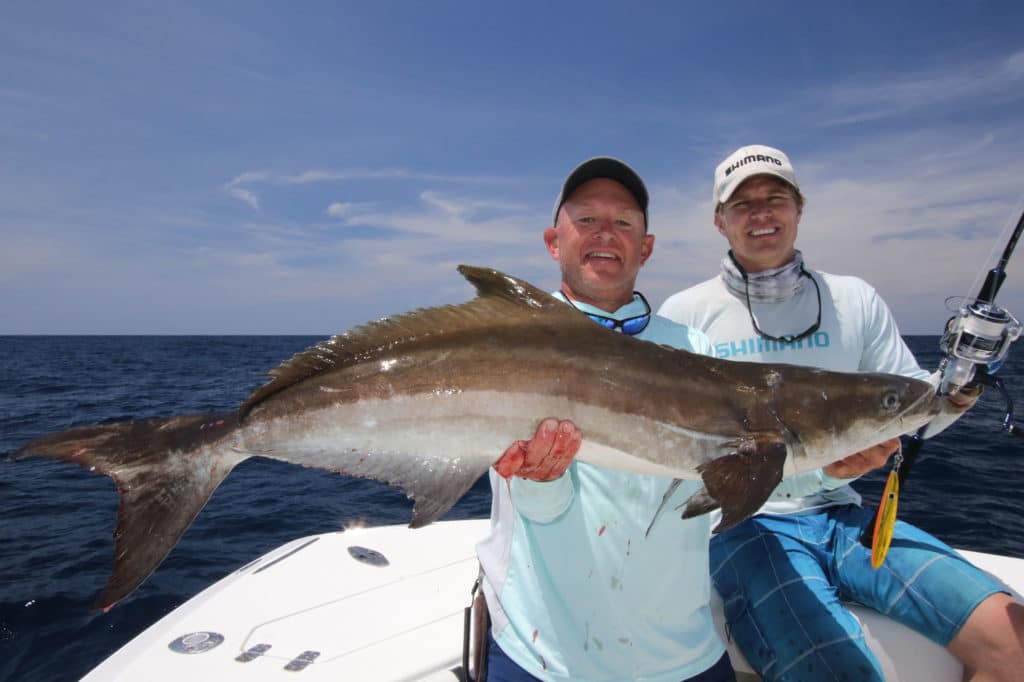
These small spots can vary in productivity from year to year or even day to day, Perkinson says.
Not to be overlooked is the state’s Artificial Reef Program with some large shipwrecks out to 90 feet. “These larger wrecks are often a magnet for species such as cobia and greater amberjack that tend to gravitate toward high-relief structure,” Perkinson says.
I suspect that the combination of a generous closed season for grouper and the fairly long run off Charleston to optimal jigging grounds accounts in large part for the quality of jig-fishing in these waters, and will help ensure in the future the sort of varied, exciting sport I witnessed in two days offshore.
Planning a Trip
As far as timing, productive and varied action offshore occurs year-round when the weather is right. However, many anglers are dissuaded from making the run during the January-through-April annual closure for grouper spawning. That’s probably just as well, because not catching these fish avoids any issues of release mortality. Limited red snapper seasons are anticipated again this year but at press time had not been set.
We stayed at Springhill Suites Charleston Downtown/Riverview, a reasonably priced and very comfortable option.
Among the many competent offshore charters around Charleston, a couple that can do a good job of providing a day of jigging action are Capt. Chuck Griffin, Charleston Offshore Fishing Charters (27 AmeraCat); Capt. John Irwin, Fly Right Charters (31 Contender); and Capt. Ben Powers, Reel Time Charter Adventures (32 World Cat).
For general and planning information, visit explorecharleston.com.
Descender Decree
At some point this year, look for a new rule mandating that all vessels fishing the South Atlantic for or possessing snappers or groupers have on board a descending device, rigged and ready to deploy. Regulatory Amendment 29, requiring this, was approved in September, 2019, by the South Atlantic Fishery Management Council and is currently in the public-comment phase. NOAA Fisheries will make the final decision.
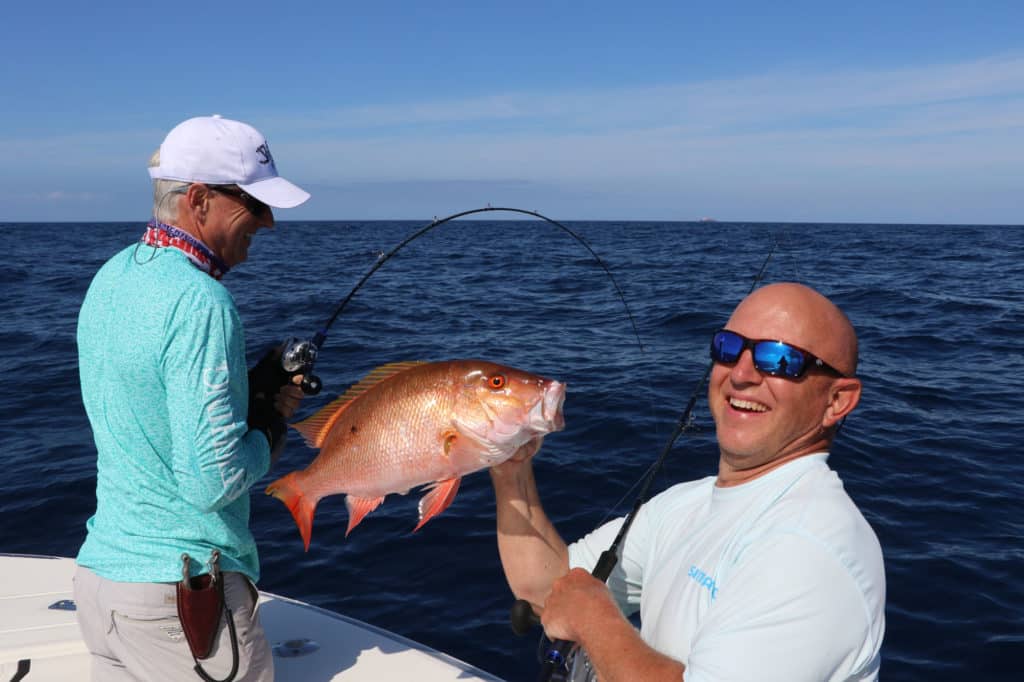
Various descending devices—such as the SeaQualizer—address the problem of barotraumatized fish. When fish come up from 100 or so feet or more with stomach everted (out the mouth) and eyes bulging, they’re suffering from the rapid expansion of gases trapped within their bodies as they’re reeled quickly to the surface. Many anglers release such fish for various reasons including because they’re unwanted, out of season or outside of legal size limits.
However, if put overboard, these fish generally float away helplessly, so release mortality is high. Descenders allow anglers to quickly lower such fish into water deep enough to mitigate the effects of barotrauma, and they can swim away normally. Studies cited by the SAFMC show that for red snapper lowered to about 200 feet, release morality decreased from 83 percent (with no descender used) to 0 to 17 percent.








